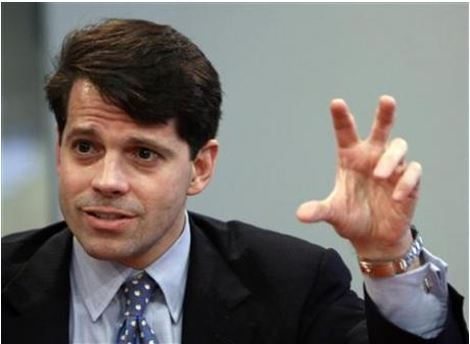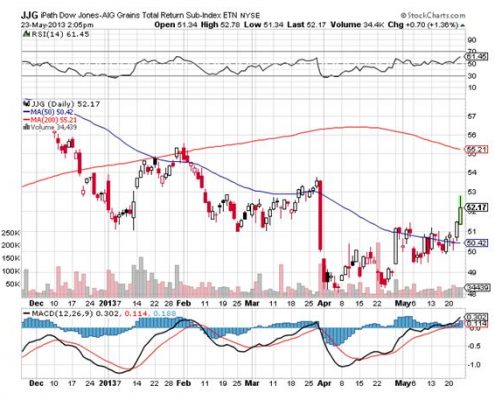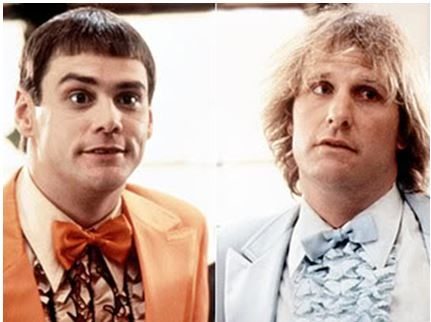
Global Market Comments
May 28, 2013
Fiat Lux
Featured Trade:
(MAY 29 GLOBAL STRATEGY WEBINAR),
(ANNOUNCING THE RELAUNCH OF HEDGE FUND RADIO),
(SKYBRIDGE CAPITAL?S ANTHONY SCARAMUCCI ON HEDGE FUND RADIO)
(SPY), (EWJ), (DXJ), (TLT), (FXY),
?(YCS), (IDX), (EWM), (EWS), (GLD)
SPDR S&P 500 (SPY)
iShares MSCI Japan Index (EWJ)
WisdomTree Japan Hedged Equity (DXJ)
iShares Barclays 20+ Year Treas Bond (TLT)
CurrencyShares Japanese Yen Trust (FXY)
ProShares UltraShort Yen (YCS)
Market Vectors Indonesia Index ETF (IDX)
iShares MSCI Malaysia Index (EWM)
iShares MSCI Singapore Index (EWS)
SPDR Gold Shares (GLD)
I often get asked by readers to share the industry contacts that enable me to make such timely and insightful market calls. Now you have the opportunity to do so.
Hedge Fund Radio is the online radio program for the true investment professional. There, you can hear me roll out my 40-year accumulation of trading contacts from across the width and breadth of the financial industry. It will enable you to match my own trading performance, which has catapulted me to the top of the hedge fund industry.
My guests will include legendary hedge fund managers, research analysts, senior government officials, specialized niche managers, industry experts, and the occasional world leader. To make these as interesting and informative as possible, I?ll be drawing on my ten years of experience as the radio correspondent British Broadcasting Corporation (BBC) in Tokyo.
My goal is to further enhance your understanding of the global financial system through these one-on-one interviews, which will last 30-60 minutes. It will give you the opportunity to find out who the figures that shape our markets really are. You can obtain all of this for a mere $4.95 per show, which you can order one at a time.
Purchasing a download of the entire interview for $4.95 is very simple. Just go to the HEDGE FUND RADIO menu tab and click on the pull down menu for RADIO SHOW (click here ). Click on the green BUY NOW button and complete the order form. A blue link will appear telling you to ?click here to proceed?. Then click on the small blue box with the question mark inside to download. Hit the PLAY arrow to listen. You can pause, fast forward, or rewind at any time.
Markets are overbought now, especially given that the US economy is only growing at a subpar 2% annual rate. But the S&P 500 (SPY) will close higher by yearend. Despite the fact that 30-year Treasury prices (TLT) are near all time highs, there are still huge opportunities in the fixed income space. And both the Japanese yen (FXY) (YCS) and the Tokyo stock market (EWJ) (DXJ) have more to run.
These were a few choice investment nuggets I gleaned from my wide-ranging interview with my friend, Anthony Scaramucci. Anthony is the founder and managing partner of SkyBridge Capital, a leading fund of funds for alternative investments. To learn more about SkyBridge Capital, please go to their website at http://www.skybridgecapital.com/.
After getting a law degree from Harvard, he started his investment career at Goldman Sachs in 1989, where he spent 7 years in the wealth management division. He went on to start his own money management firm, which he sold to Neuberger Berman in 2001. When Lehman Brothers bought Neuberger Berman in 2003, Scaramucci spent a short stint there as managing director of its Investment Management Division.
Anthony is the author of two books: The Little Book of Hedge Funds: What You Need to Know About Hedge Funds but the Managers Won?t Tell You and Goodbye Gordon Gekko: How to Find Your Fortune Without Losing Your Soul.
Scaramucci is focusing his heaviest weighting in fixed income strategies that benefit from improving credit ratings in the US real estate market and low prepayment rates. This brilliant, reasonably well risk adjusted strategy is earning him 11%-13% annual returns, or 5-7 times the cash flow of ten-year Treasury bonds.
Anthony has been consistently negative on gold, which makes him look like a genius for the past two years. He has a small weighting in emerging markets, which offer higher risk and volatility, but potentially greater returns. His picks there include the Southeast Asian nations of Indonesia (IDX), Singapore (EWS), and Malaysia (EWM).
He thinks Apple (AAPL) is very cheap, but is facing an innovation headwind. Still, investors in Steve Jobs? creation should do well over the long term.
SkyBridge Capital uses 28 sub managers to generate outsized market returns. He came out ahead by 20% in 2012 and is up 9% so far this year. It has won awards for the best fund of funds with over $1 billion in assets for the last three years in a row. The firm now has over $7.7 billion in assets under management or advisement.
Anthony?s team of professionals does all the spadework in finding great managers, doing the due diligence, and cross hedging exposures. He charges 1.50% management fee, but last year earned back 77 basis points for his clients in manager discounts. So on a net basis the fees are really quite reasonable.
New investors can open an account for as little as $50,000. This is a big deal because some of the best managers have minimums as high as $10-$15 million. It is the only way the little guy can get access to the best of the best. Customers must be accredited investors with at least $200,000 in annual income and a net worth of over $1 million.
Anthony comes across as polished and erudite, yet cautious. He clearly spends a lot of time thinking about how to invest other people?s money.
As if Scaramucci didn?t have enough to do, he devotes much energy to organizing the SkyBridge Alternatives Conferences, the annual Woodstock for the high and the mighty of the hedge fund industry. The most recent event in Las Vegas presented heavyweight hedge fund legends Paulson & Co.?s John Paulson, Third Point?s Daniel Loeb, and Omega?s Leon Cooperman (click here for my coverage of this love fest).
I will be attending the next SkyBridge Alternatives Conference in Singapore during September 24-27, 2013 (click the link http://www.saltconference.com/saltasia2013/). Former Treasury secretary, Tim Geithner, and the last European Central Bank president, Jean-Claude Trichet, will be the keynote speakers.
To learn the precise details of the SkyBridge high return strategy, please follow the instructions for downloading the full interview below. There you can also get his list of the best US stocks to buy in the current environment.
Just go to the AUDIO menu tab and click on the pull down menu for RADIO SHOW (click here for the link at http://madhedgefundradio.com/radio-show/). Click on the green BUY NOW button and complete the order form. A blue link will appear telling you to ?click here to proceed?. Then click on the small blue box with the question mark inside to download. Hit the PLAY arrow to listen. You can pause, fast forward, or rewind at any time. Given the quality of the information you will obtain, the $4.95 price is a bargain.
To buy The Little Book of Hedge Funds at a discounted Amazon price, please click here. To buy Goodbye Gordon Gekko, please click here.
SkyBridge Capital?s Anthony Scaramucci on Hedge Fund Radio
Global Market Comments
May 24, 2013
Fiat Lux
Featured Trade:
(UPDATED 2013 STRATEGY LUNCHEON SCHEDULE),
(A TRIBUTE TO A TRUE VETERAN)
(UPDATE ON THE MAD DAY TRADER),
(JJG), (TBT)
iPath DJ-UBS Grains TR Sub-Idx ETN (JJG)
ProShares UltraShort 20+ Year Treasury (TBT)
Come join me for lunch for the Mad Hedge Fund Trader's Global Strategy Updates, which I will be conducting throughout Europe during the summer of 2013. A three-course lunch will be followed by a PowerPoint presentation and an extended question and answer period.
I'll be giving you my up to date view on stocks, bonds, currencies commodities, precious metals, and real estate. And to keep you in suspense, I'll be throwing a few surprises out there too. Enough charts, tables, graphs, and statistics will be thrown at you to keep your ears ringing for a week.
I look forward to meeting you, and thank you for supporting my research. To purchase tickets for the luncheons, please go to my online store at http://madhedgefundradio.com/ and click on "LUNCHEONS" and then the post for the city that you wish to attend.
New York City - July 2
London, England -July 8
Amsterdam, Netherlands -July 12
Berlin, Germany -July 16
Frankfurt, Germany -July 19
Portofino, Italy -July 25
Mykonos, Greece- August 1
Zermatt, Switzerland - August 9
I am happy to report that we are making great progress with The Mad Day Trader, rapidly evolving the service to best meet the needs of the professional trader. We have already closed huge winners in soybeans (SM), the iPath Dow Jones AIG Grains Total Return Index ETF (JJG), and short Treasury bond (TBT).
It is not easy for me to translate "traderese" in plain English, but the readers say it's worth the effort. As of today, trader Jim Parker will be posting his open positions on the website, which will be updated daily. We have temporary parked them under the Global Trading Dispatch menu tab under "POSITIONS" (just click here). Things will migrate further once we refine the product.
While the Global Trading Dispatch focuses on investment over a one week to six-month time frame, Mad Day Trader will exploit moneymaking opportunities over a ten minute to three-day window. It is ideally suited for day traders, but can also be used by long-term investors to improve market timing for entry and exit points.
Mad Day Trader uses a dozen proprietary short-term technical and momentum indicators to generate buy and sell signals. These will be sent to you by text message and email for immediate execution. During normal trading conditions, you should receive three to five alerts a day.
As with our existing service, you will receive ticker symbols, entry and exit points, targets, stop losses, and regular real time updates. At the end of each day, a separate short-term model portfolio will be sent to you and posted on the website.
The new service will generate long and short-selling signals for a range of widely traded exchange traded funds (ETF's). These include stock indexes (SPY), bonds (TLT), (TBT), foreign exchange (FXY), (FXE), (FXA), commodities (CU), (CORN), energy (USO), (UNG), and precious metals (GLD), (SLV). There is also a special focus on the leading hot stocks of the day. This will be followed up with a series of educational webinars that will be an important resource for the serious trader.
The Mad Day Trader service will be provided out of Chicago by my old friend and industry veteran, Jim Parker. Jim is a 40-year veteran of the financial markets and has long made a living as an independent trader in the pits at the Chicago Mercantile Exchange. He has worked his way up from a junior floor runner, to advisor to some of the world's largest hedge funds. We are lucky to have him on our team and gain access to his experience, knowledge, and expertise.
I have been following his alerts for the past five years, and his market timing has become an important part of the "unfair advantage" that I provide readers. The time has finally come to offer Mad Day Trader as a stand-alone product.
A trading service with this degree of success and sophistication normally costs $20,000 a year. As a client of The Mad Hedge Fund Trader, you can purchase Mad Day Trader alone for $2,000 per year or $699 per quarter. Or you can buy it as a package together with Global Trading Dispatch, which we call Global Trading Dispatch Pro, for $4,000 per year, a 20% discount to the full retail price. Give yourself the unfair advantage you always wanted and buy the combined package.
As part of the initial launch, I will send out Mad Day Trader free to all current paid subscribers of Global Trading Dispatch until June 21st. That will give you the opportunity to decide if the new service can enhance your trading performance. When the free service expires, we will send you a link to purchase a full subscription. There will be no automatic billing of current subscribers.
Part of the deal is that I want to hear from you on how we can improve Mad Day Trader to make it more user friendly and coherent to better meet your needs. Sometimes, a couple of old warhorses like us forget how much our specialized language is incomprehensible to the outside world. Just send us an email with suggestions to support@madhedgefundtrader.com.
Global Market Comments
May 23, 2013
Fiat Lux
Featured Trade:
(JULY 8 LONDON STRATEGY LUNCHEON),
(THE AMERICAN ONSHORING TREND IS ACCELERATING),
(GE), (TSLA),
(HEDGE FUNDS: THE NEW DUMB MONEY)
General Electric Company (GE)
Tesla Motors, Inc. (TSLA)
Come join me for lunch for the Mad Hedge Fund Trader?s Global Strategy Update, which I will be conducting in London on Monday, July 8, 2013. A three-course lunch will be followed by a PowerPoint presentation and an extended question and answer period.
I?ll be giving you my up to date view on stocks, bonds, currencies commodities, precious metals, and real estate. And to keep you in suspense, I?ll be throwing a few surprises out there too. Enough charts, tables, graphs, and statistics will be thrown at you to keep your ears ringing for a week. Tickets are available for $249.
I?ll be arriving an hour early and leaving late in case anyone wants to have a one on one discussion, or just sit around and chew the fat about the financial markets.
The lunch will be held at a private club on St. James Street, the details of which will be emailed to you with your purchase confirmation.
I look forward to meeting you, and thank you for supporting my research. To purchase tickets for the luncheons, please go to my online store.
Much of the recent buying of stocks has been generated by hedge funds panicking to cover shorts. Convinced of the imminent collapse of Europe, the impotence of governments to do anything about it, and slow economic growth at home, many managers were running a maximum short for the umpteenth time, and were forced to cover at a loss. Meet the new dumb money: hedge funds.
When I first started on Wall Street in the seventies, you heard a lot about the ?dumb money.? This was a referral to the low-end retail investors who bought the research, hook-line-and-sinker, loyally subscribed to every IPO, religiously bought every top, and sold every bottom.
Needless to say, such clients didn?t survive very long, and retail stock brokerage evolved into a volume business, endlessly seeking to replace outgoing suckers with new ones. When one asked ?Where are the customers? yachts,? everyone in the industry new the grim answer.
Since the popping of the dot-com boom in 2000, the individual investor has finally started to smarten up. They bailed en masse from equities, seeking to plow their fortunes into real estate, which everyone knew never went down. Since 2007, the exit from equities has accelerated.
I bet the average individual investor is outperforming the average hedge fund in 2013 by a large margin. Look no further than the chart below, which shows and average return by hedge funds, compared to and S&P 500 index gain of 16%.
This takes me back to the Golden Age of hedge funds during the 1980?s. For a start, you could count the number of active funds on your fingers and toes, and we all knew each other. The usual suspects included the owl like Soros, the bombastic Robertson, steely cool Tudor-Jones, the nefarious Bacon, the complicated Steinhart, of course, myself, and a handful of others.
The traditional Wall Street establishment viewed us as outlaws, and believed that if the trades we were doing weren?t illegal, they should be, like short selling. Investigations and audits were a daily fact of life. It wasn?t easy being green. I believe that Steinhart was under investigation during his entire 40 year career, but the Feds never brought a case.
It was all worth it, because in those days, if you did copious research and engaged in enough out of the box thinking, you could bring in enormous profits with almost no risk. I used to call these ?free money? trades. To be taken seriously as a manager by the small community of hedge fund investors you had to earn 40% a year or you weren?t worth the perceived risk. Annual gains of 100% were not unheard of.
Let me give you an example. In 1989, you could buy a leveraged warrant on a Japanese stock near parity, for $100, that gave you the right to own $500 worth of stock. You bought the warrant and sold short the underlying stock. Overnight yen yields then were at 6%, so 500% X 6% = 30% a year, your risk free return.
Most Japanese stock dividends were near zero then, so the cost of borrowing was almost nothing. The position effectively created a high yield synthetic convertible bond. If the stock then fell, you also made big money on your short stock position. This was not a bad portfolio to have in 1990, when the Nikkei stock index plunged from ?39,000 to ?20,000 in three months, and some individual shares dropped by 80%.
Trades like this were possible because only a smaller number of mathematicians and computer geeks, like me, were on the hunt, and collectively, we amounted to no more than a flea on an elephant?s back. Today, there are over 10,000 hedge funds managing $2.5 trillion, accounting for anywhere from 50% to 70% of the daily volume.
Many of the strategies now can only be executed by multimillion-dollar mainframe computers collocated next to the stock exchange floor. Winning or losing trades are often determined by the speed of light. And as the numbers have expanded exponentially from dozens to hundreds of thousands, the quality of the players has gone down dramatically, with copycats and ?wannabees? crowding the field.
The problem is that hedge funds are no longer peripheral to the market. They are the market, and therein lies the headache. How are you supposed to outperform the market when it means beating yourself? As a result, hedge fund managers have replaced the individual as the new ?dumb money?, buying tops and selling bottoms, only to cover at a loss, as we witnessed today.
When markets disintegrate into a few big hedge funds slugging it out against each other, no one makes any money. I saw this happen in Tokyo in the 1990?s, when hedge funds took over the bulk of trading. Volumes shrank to a shadow of their former selves.
How does this end? We have already seen the outcome; that investors flee markets run by hedge funds and migrate to those where they have less of an impact. That explains the meteoric rise of trading volumes of other assets classes, like bonds and foreign exchange.
 How About 2% and 20%?
How About 2% and 20%?
Global Market Comments
May 22, 2013
Fiat Lux
Featured Trade:
(JULY 25 PORTOFINO, ITALY STRATEGY LUNCHEON),
(FIVE STOCKS TO BUY FOR THE SECOND HALF)
(TESTIMONIAL)



















